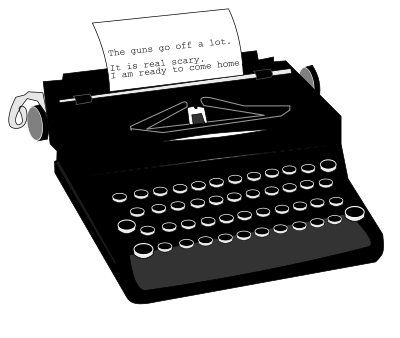
Home > Programming > Fonts > Old News
Here is an example of a Web Font.

In days of yore, there were things called typewriters. A typewriter began as a mechanical tool that looked vaguely like the keyboards of computers of the late 20th and early 21st centuries. Using their hands, "typists" struck keys, activating levers that caused a letter to print onto paper. The letter was visible because the letter on the lever banged into an ink saturated ribbon, pushing some ink out of the ribbon onto the paper. Each letter was cast into metal on the end of the lever. The action of banging the paper through the ribbon tended to get ink, paper fibers and dust crammed into the corners of the letter shape. The result was smudged text.
This styled text might be used for an online story where the author wants to include an old fashioned typed letter, but still have the text accessible for all page users.
The typewriter-styled text is not an image. It is text which can be read by screenreader software. That is a good thing for the sight impaired.
This page uses a font (typeface) that simulates a typewriter's text. This font is called "GNU typewriter" and is available from Open Font Library.
In order to use the web font, I downloaded it from the Open Font Library and installed it on my web server so I could let you read the fuzzy typewriter text font without having it on your own computer. The page styling controls how to make the text visible to you.
@font-face {
font-family: 'GNUTypewriter';
src: url('../../gtw-webfont.woff2') format('woff2'),
url('../../gtw-webfont.woff') format('woff');
font-weight: normal;
font-style: normal;
}
body {font-size:100%;}
h1 {font-family: 'GNUTypewriter';
font-weight: normal;
font-style: normal; font-size:3.0em;}
h2 {font-size:1.875em;}
p.gnu { font-family: 'GNUTypewriter';
font-weight: normal;
font-style: normal; font-size:1.0em;}